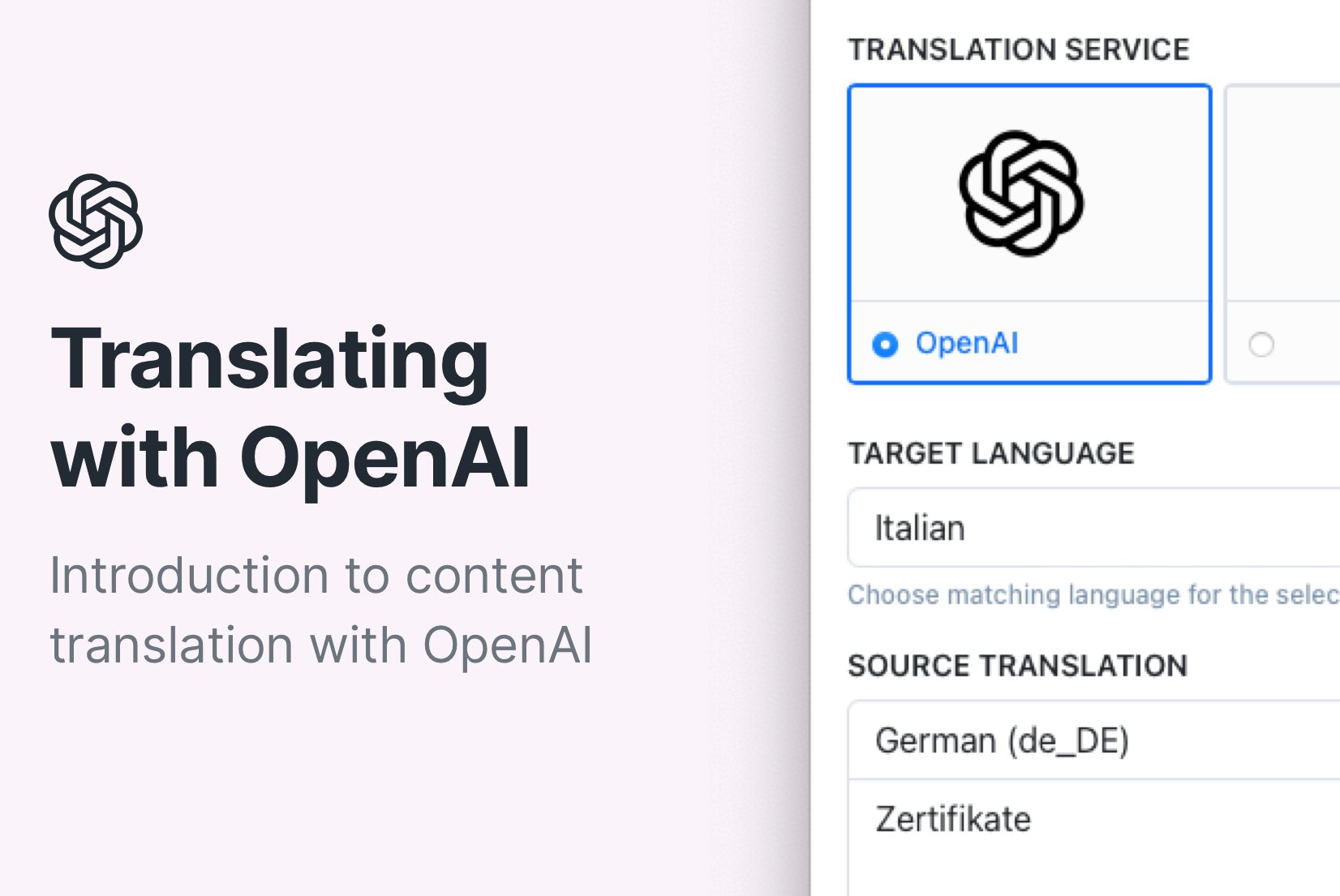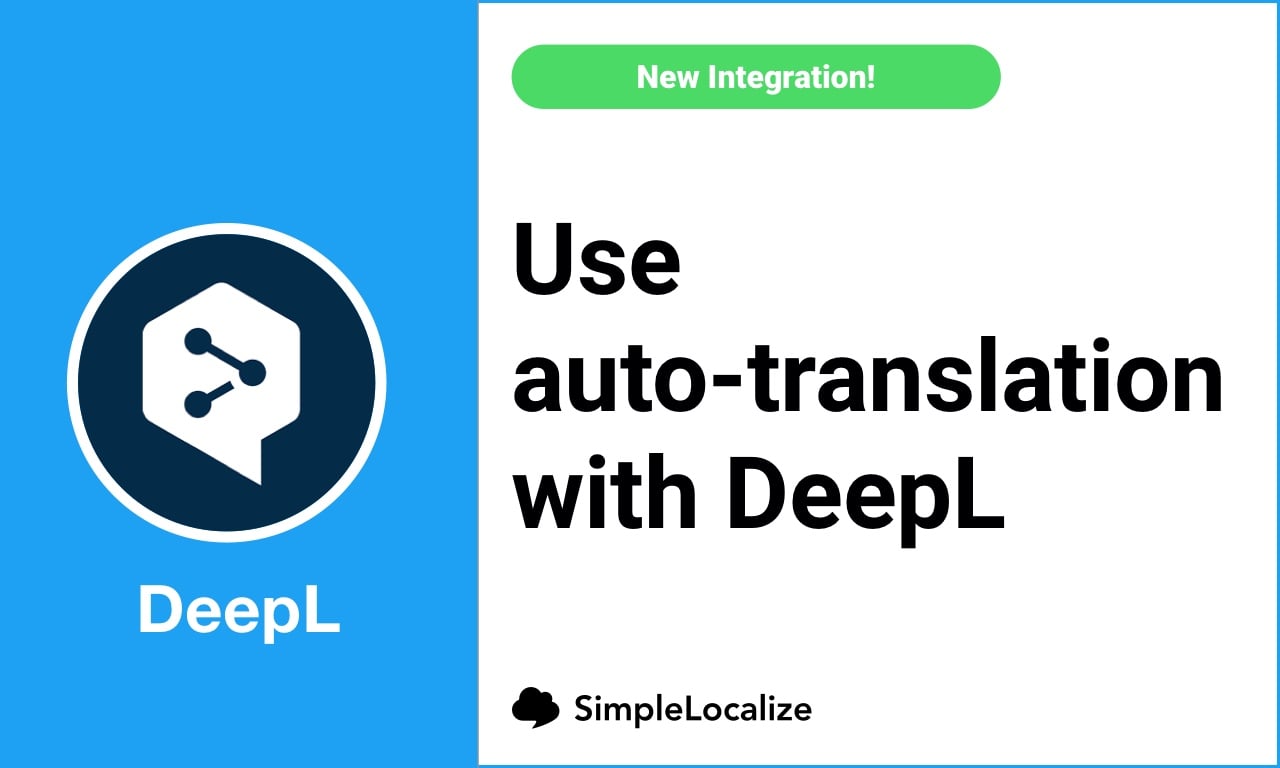How to translate a website or app using OpenAI?

When translating a website or app, you can use the help of different machine translation providers, like DeepL or Google Translate, to auto-translate the content. Besides those well-known options, there is now a new approach, offered by OpenAI and its advanced language models. How does it work? How to use it for translations with SimpleLocalize? In this blog post, we will explain and present to you how to use OpenAI for translations.
What is OpenAI?
OpenAI is an artificial intelligence research lab that focuses on developing advanced AI models and technologies. It was founded in 2015 and has since become known for its cutting-edge research in natural language processing, machine learning, and other AI fields.
It is known for its advanced language models, like ChatGPT, which goes beyond just generating text. OpenAI can handle translations too, by training its models on large datasets of parallel texts in different languages, allowing them to learn the mappings between languages and generate translations.

Does OpenAI work for translations?
OpenAI's language models, like ChatGPT, can be used for translating content between different languages. They can work great when you need to quickly and accurately translate large volumes of text while maintaining the context and meaning of the original content. OpenAI can be a great help for translators to speed up the translation process and reduce the time and effort required to translate content manually.
However, it's important to note that while AI translation has improved significantly recently, it may still have limitations, especially with complex or specialized content. Therefore, human review or post-editing may be necessary to ensure the highest quality translations.

OpenAI pros
There are several advantages to using OpenAI for translating content:
- Speed: quick auto-translation of large volumes of text compared to traditional human translation services. It's great for time-sensitive projects.
- Cost-effective: AI translation services are often more cost-effective than standard translation services, especially for large-scale translation projects.
- Quality: OpenAI's translation models often produce translations that are comparable in quality to those of DeepL and Google Translate.
- Languages: support for a wide range of language pairs
- Customization: flexible customization options, e.g., by adding context, for tailored results
OpenAI cons and limitations
While AI translations have improved significantly, they still require a human eye to review the translated content. Some potential drawbacks or limitations to consider when using them for translating content are:
- Accuracy and quality: especially when translating complex or nuanced content. Certain languages or language pairs may also be more challenging for the model to translate accurately.
- Contextual understanding: AI models may sometimes struggle to understand the full context of a sentence or document, leading to mistranslations or misinterpretations.
- Specialized Terminology: AI models may not always be able to accurately translate specialized terminology or industry-specific jargon.
- Possible biases or inaccuracies due to training data reliance
AI translation can provide a good starting point, but it may still require human review and post-editing to ensure the quality and accuracy of the translated content.
How to translate your app or website using OpenAI and SimpleLocalize?
The integration of OpenAI in SimpleLocalize allows you to quickly and easily translate your web or app content to different languages. See below for how to get started.
Create your project and upload translations
If you are new to SimpleLocalize, it's a simple yet effective translation management software that can help you and your team in your translation workflow and data management. You can learn more about it in our documentation.
To translate your website or app using OpenAI, start by creating an account at SimpleLocalize. Then, create and set up a new project for your content, following the instructions in the app.
Next, add your translation keys to the project. You can do it in several ways:
- upload from file (e.g., JSON, Excel, CSV and more supported formats)
- upload via API (great for automation)
- upload with CLI (for developers)
Or just create some translation keys manually if you would like to start with a small set of keys and test the auto-translation feature.

Finally, add other languages you want to translate your content into. You can do it in the Languages tab.
Make sure to add actual translations to your keys, e.g. in your default language, so you can see the results of the auto-translation process.
Setup integration with OpenAI
To start using OpenAI for translations in SimpleLocalize, you need to set up the integration. Here's how to do it.
Go to your project Settings and find the Auto-translation section. There, at the top, you can set up the integration with ChatGPT, OpenAI's language model. For that, you need to:
- provide your OpenAI API key (you can get it from your OpenAI account)
- select the GPT model version (e.g., GPT-3.5, GPT-4)
- add System prompt to provide context for the translations (optional)

Scroll down to the bottom of the page and click Save to apply the changes.
The integration is set up per project. You can have multiple projects in SimpleLocalize, each with its own settings and integrations.
Auto-translate using OpenAI
Now, you can start auto-translating your content using OpenAI. SimpleLocalize offers several options for that:
- Auto-translate just one translation key (great for testing). Just click on the Auto-translate text button in the target language.
- Auto-translate selected translation keys. Hold Ctrl or ⌘ to access the multi-select mode, then click on the keys you wish to translate, and then the Bulk Actions button. Choose Auto-translation option and follow the instructions.
- Auto-translate all translation keys in one language. Head to the Languages tab, select the language you want to translate, and click the Auto-translate all keys button.
- Auto-translate all translation keys in all languages. Click the Auto-translate all keys button in the Languages tab.

Translations context
The OpenAI integration in SimpleLocalize allows you to provide context for the translations, which can help the model generate more accurate and relevant translations. You can do that by adding a System prompt in the integration settings.
For example, a system prompt can contain additional information about:
- the type of content you are translating (e.g., website, app, marketing materials)
- the target audience or region
- the style or tone of the content (e.g., formal, informal)
- any specific terminology or jargon used in the content

Conclusions
OpenAI's language models, like ChatGPT, can be a great tool for translating content quickly and accurately. By integrating OpenAI with SimpleLocalize, you can easily auto-translate your web or app content to different languages, saving time and effort in the translation process. Remember that while AI translation can provide a good starting point, it may still require human review and post-editing to ensure the quality and accuracy of the translated content.
For more information or if you have any questions about using OpenAI for translations in SimpleLocalize, feel free to contact us. We are here to help you with your translation needs!



